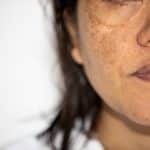East Melbourne VIC 3002
What is Osteoporosis?

Osteoporosis is a condition that is characterised by weakened bones that fracture easily. After menopause women are at risk of developing osteoporosis. Peak bone mass is usually reached during a woman’s 20s and 30s when the skeleton has stopped growing and the bones are at their strongest. The female hormone oestrogen plays an important role in maintaining bone strength. Following menopause oestrogen levels drop and this may increase bone loss. The average woman will lose up to 10% of her bone mass in the first five years after menopause. Research suggests that approximately half of all women over the age of 60 will have at least one fracture in their lifetime due to osteoporosis. There is usually no sign that osteoporosis is developing until a fracture occurs. Pain will only occur with osteoporosis if there has been a fracture. The most common places for fractures are the spine, hip and wrist, often after a minor fall.
In order to minimise the risk of osteoporosis you should do the following:
- Ensure that you have adequate dietary calcium. 1300mg per day for women over the age of 50, which is equivalent to three to four servings of dairy per day.
- Maintain adequate vitamin D levels. Approximately 5 – 15 minutes of sunlight will provide the necessary daily requirement. This of course will depend on the season and where you live. If you are unable to obtain adequate vitamin D through sun exposure then vitamin D supplements may be required.
- Do regular weight bearing activities
- Stop smoking
- Use caffeine in moderation
Osteoporosis is commonly diagnosed with a bone mineral density scan which uses a specialised x-ray technique called DEXA. Bone density scans are recommended around the time of menopause for all women, in particular those with risk factors such as early menopause, family history of osteoporosis, thyroid or parathyroid disease, coeliac disease, rheumatoid arthritis, chronic kidney or liver disease, those taking corticosteroids, or a history of previous fractures.
There are a number of treatments available for the management of osteoporosis. Treatments aim to strengthen the existing bone, help prevent further bone loss and most importantly reduce the risk of fractures. Treatments include:
- Vitamin D and calcium supplements
- Hormone replacement therapy
- Oral bisphosphonates –prescribed by an endocrinologist or a physician experienced in the management of osteoporosis
- SERM (selective oestrogen receptor modulators).These inhibit bone resorption but are not usually first line therapy.
- Anabolic agents: Under trial for severe osteoporosis in women who have side effects on bisphosphonates.








